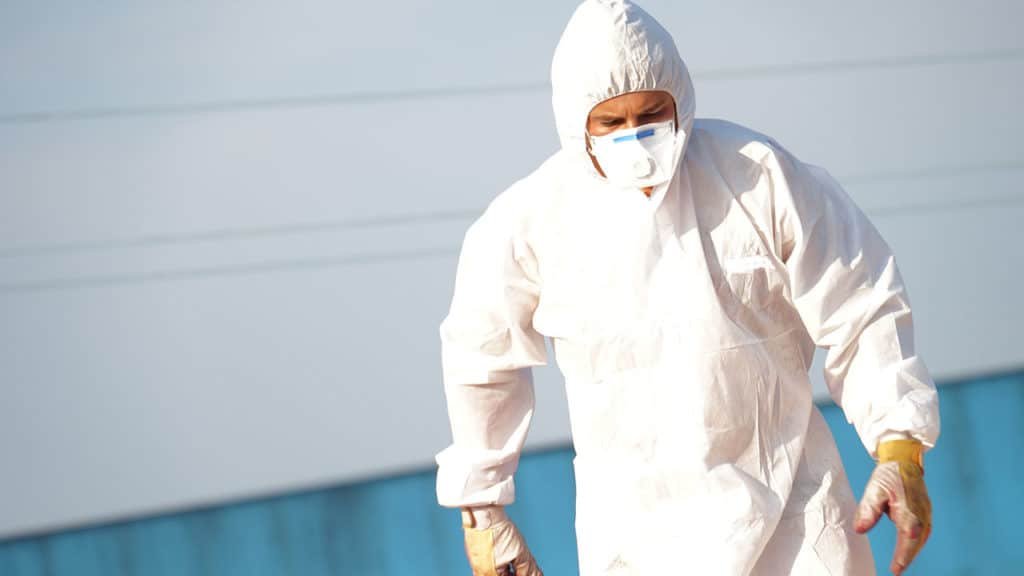Disposable protective suits play a critical role in safeguarding individuals from harmful substances, infectious diseases, and hazardous environments. The choice of sewing methods used in the construction of these garments directly impacts their durability, comfort, and effectiveness. This article explores various sewing techniques suitable for disposable protective suits, focusing on their advantages, limitations, and applications.

Importance of Sewing Techniques in Disposable Protective Suits
The primary function of a disposable protective suit is to create a barrier between the wearer and potential contaminants. To achieve this, the material must be carefully assembled using appropriate sewing techniques that ensure seam integrity while maintaining flexibility and breathability. Poorly sewn seams can compromise the suit’s performance by creating gaps or weak points where contamination may penetrate. Therefore, selecting the right sewing method is essential for producing high-quality protective gear.
Common Sewing Methods for Disposable Protective Suits
1. Flat Seam Stitching
Flat seam stitching involves overlapping two pieces of fabric and securing them with a straight stitch. This technique is widely used due to its simplicity and cost-effectiveness. It provides a strong bond but may not offer optimal waterproofing or chemical resistance, making it more suitable for low-risk environments.
- Advantages: Easy to implement, economical, and effective for lightweight materials.
- Limitations: Limited protection against liquids and chemicals; prone to unraveling if improperly sealed.
- Applications: General-purpose disposable coveralls for non-critical settings such as food processing or light industrial work.
2. Seam Taping
Seam taping enhances the seal of stitched seams by applying an adhesive tape over the joint. This method improves the suit’s resistance to liquid penetration and increases overall durability. It is commonly used in medical-grade protective clothing.
- Advantages: Excellent water and chemical resistance; reinforces seam strength.
- Limitations: Adds complexity and cost to production; requires careful alignment during assembly.
- Applications: Surgical gowns, isolation gowns, and other healthcare PPE requiring higher levels of protection.
3. Ultrasonic Welding
Ultrasonic welding uses high-frequency vibrations to fuse thermoplastic materials together without the need for needles or threads. This technique produces seamless bonds that are highly resistant to tearing and fluid ingress.
- Advantages: Superior strength, excellent waterproofing, and no risk of thread degradation.
- Limitations: Expensive equipment investment; limited to compatible materials (e.g., polypropylene).
- Applications: High-performance protective suits for hazardous waste management, chemical handling, and emergency response scenarios.
4. Heat Sealing
Heat sealing involves melting the edges of two layers of material together under controlled temperature and pressure conditions. Like ultrasonic welding, this method eliminates the need for traditional stitching and ensures airtight seals.
- Advantages: Strong, durable joints; ideal for heavy-duty applications.
- Limitations: Requires specialized machinery; restricted to heat-sensitive materials.
- Applications: Radiation protection suits, biohazard containment garments, and aerospace use.
5. Coverstitching
Coverstitching creates decorative and functional seams by simultaneously sewing multiple rows of stitches. While primarily aesthetic in many applications, it also offers additional reinforcement and stretch accommodation.
- Advantages: Enhances visual appeal; supports flexible movement.
- Limitations: Less effective for critical barrier functions; typically reserved for less demanding tasks.
- Applications: Lightweight protective wear for agricultural or janitorial purposes.
Factors Influencing Sewing Method Selection
When choosing a sewing method for disposable protective suits, several factors must be considered:
- Material Compatibility: Not all sewing techniques are suitable for every type of fabric. For instance, natural fibers like cotton cannot be ultrasonically welded, whereas synthetic materials such as polyethylene and polypropylene excel in this process.
- Level of Protection Required: Applications involving biological hazards, toxic chemicals, or radioactive materials demand superior seam integrity compared to general cleaning or maintenance activities.
- Cost Constraints: Budgetary limitations often dictate whether advanced technologies like ultrasonic welding or heat sealing are feasible versus simpler methods like flat seam stitching.
- Ergonomics and Comfort: Workers wearing protective suits for extended periods require garments that allow ease of movement and breathability. Certain sewing methods contribute to better ergonomics by reducing bulkiness and irritation at seam junctions.
- Regulatory Standards: Compliance with industry standards (e.g., ASTM F1670/F1671 for blood-borne pathogens, EN 14126 for infectious agents) necessitates adherence to specific sewing protocols that guarantee adequate performance.
Selecting the appropriate sewing method for disposable protective suits is a multifaceted decision influenced by material properties, desired level of protection, economic considerations, ergonomic requirements, and regulatory guidelines. Each technique—whether flat seam stitching, seam taping, ultrasonic welding, heat sealing, or coverstitching—offers unique benefits tailored to different operational needs. By understanding the strengths and weaknesses of each approach, manufacturers can optimize their production processes to deliver reliable, safe, and comfortable protective solutions for diverse end-users. As technology continues to evolve, innovations in sewing methods will further enhance the quality and functionality of disposable protective suits, ensuring they meet the ever-increasing demands of modern industries.


